Jeff Knox:Wilbert Smith の微小金属球体の正体
要旨
Jeff Knox が
- Wilbert Smith の微小金属球体の正体
について詳しく解説している。
関連
Wilbert Smith の専門知識の信頼度(全体+追加2) (2019-02-23)
切り出し静止画
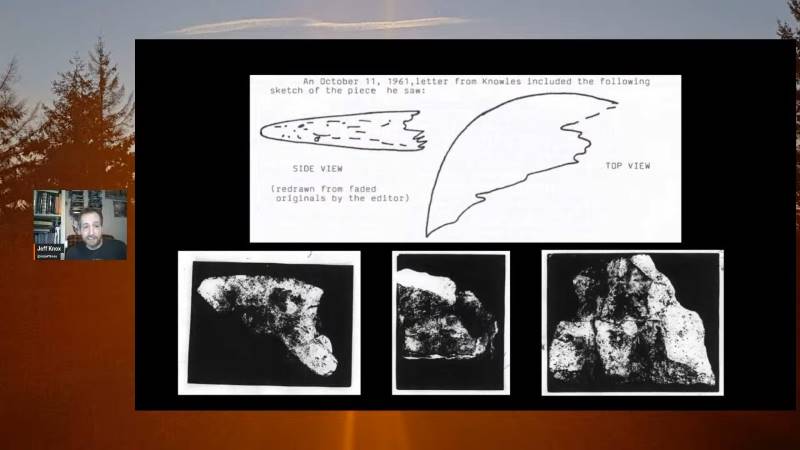
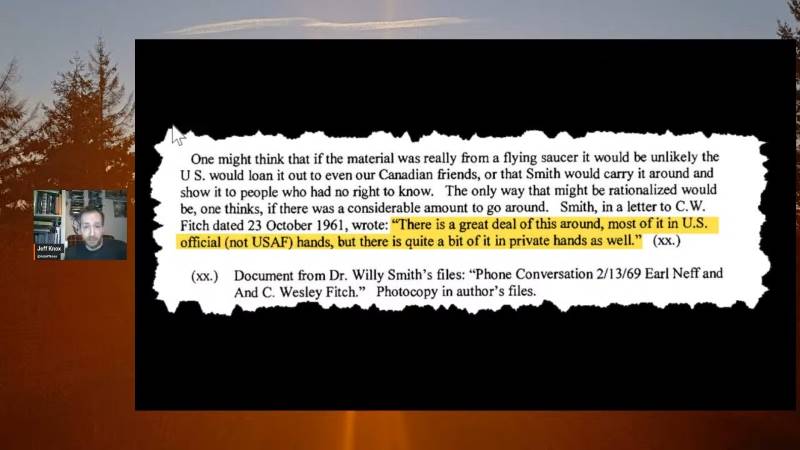
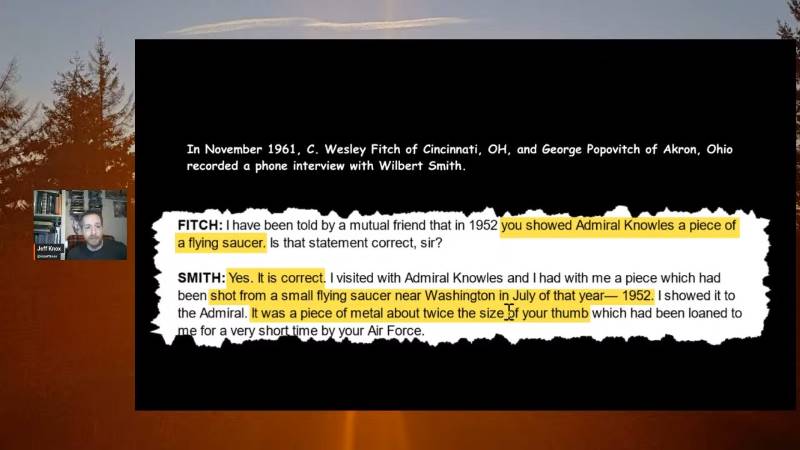
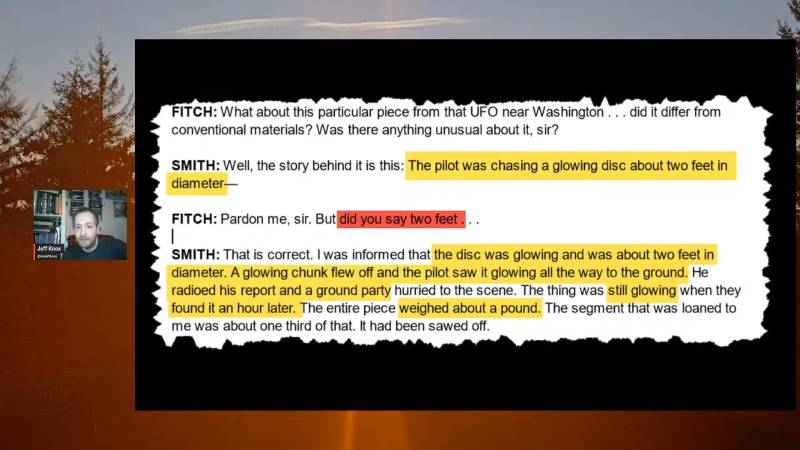
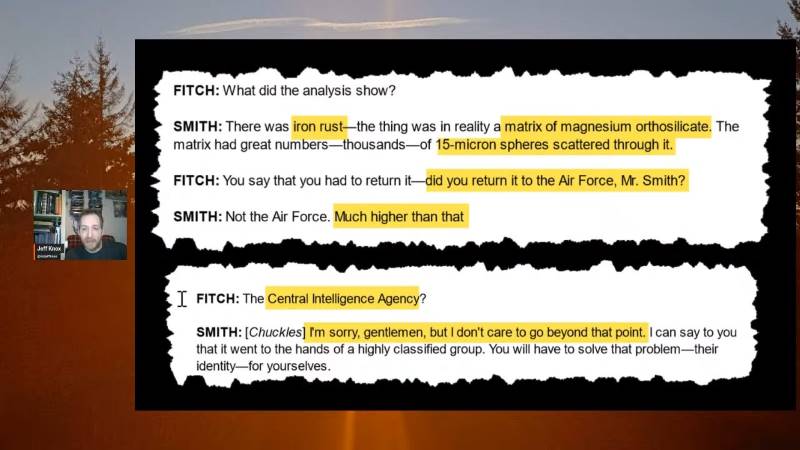
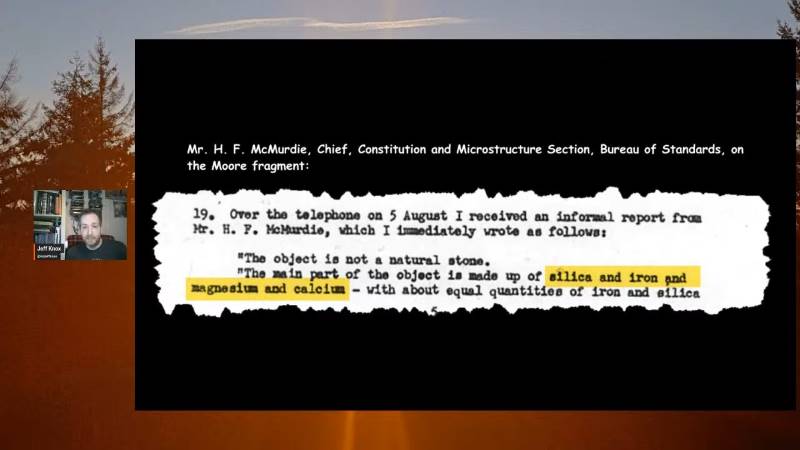
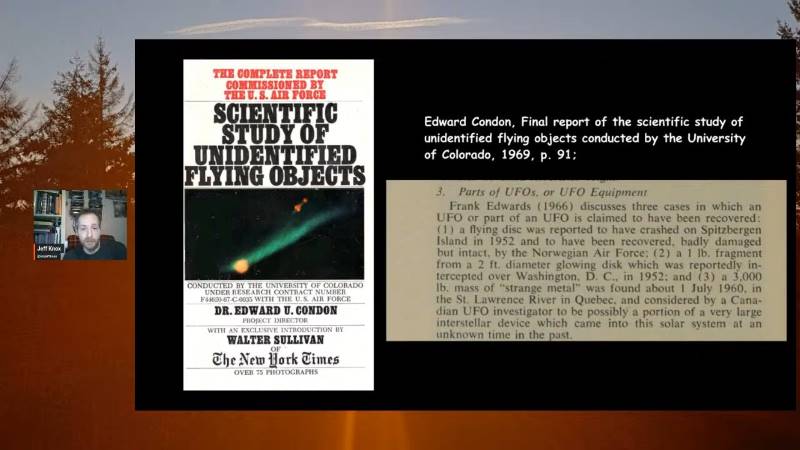
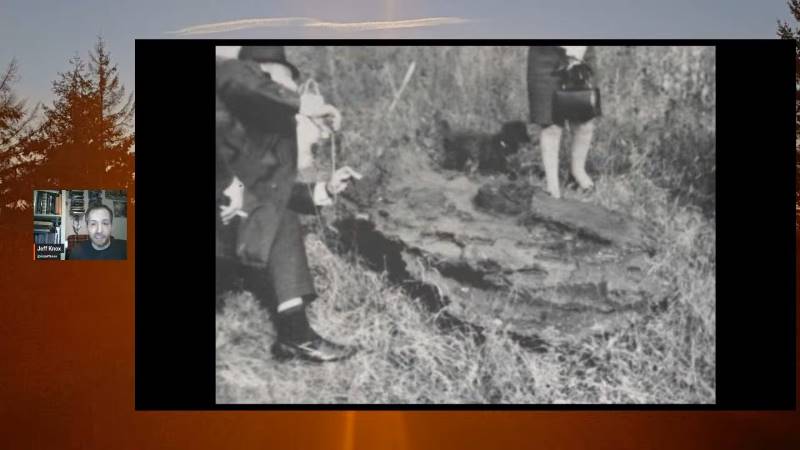
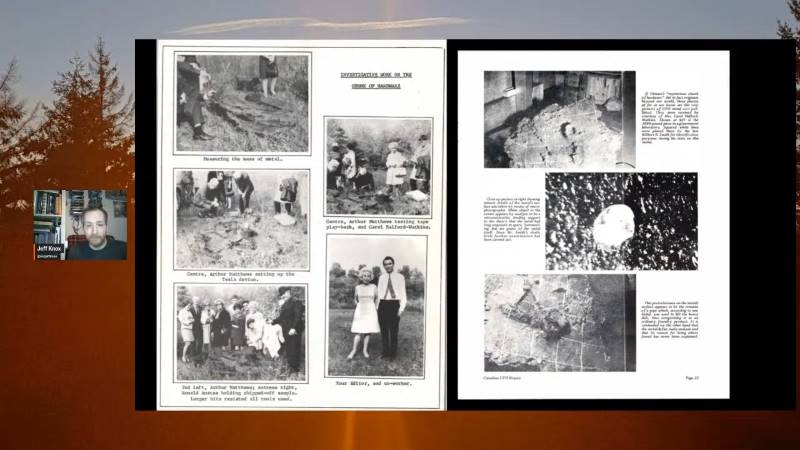

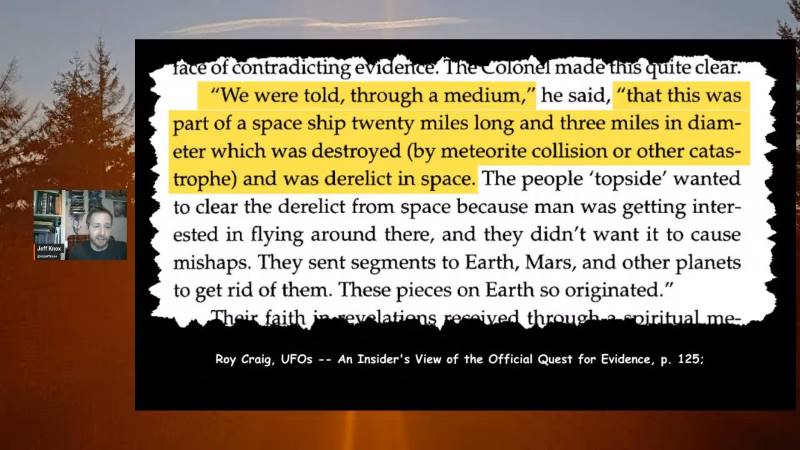
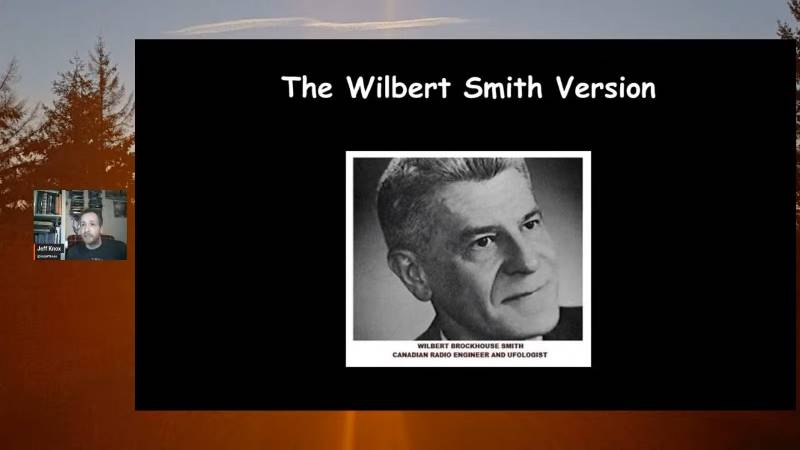
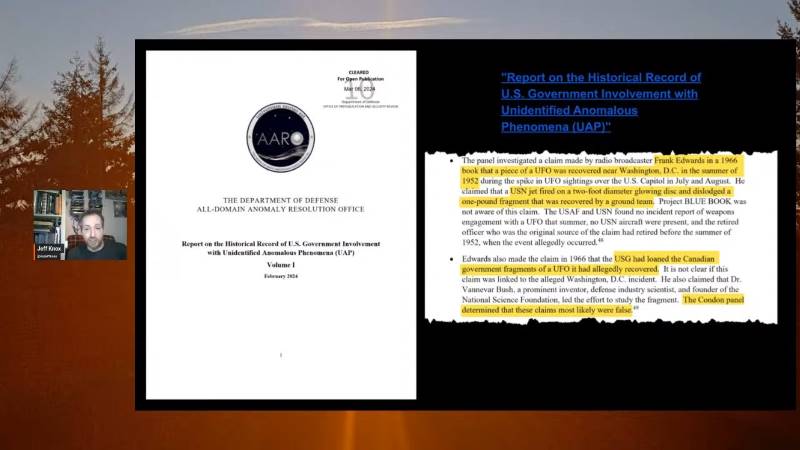
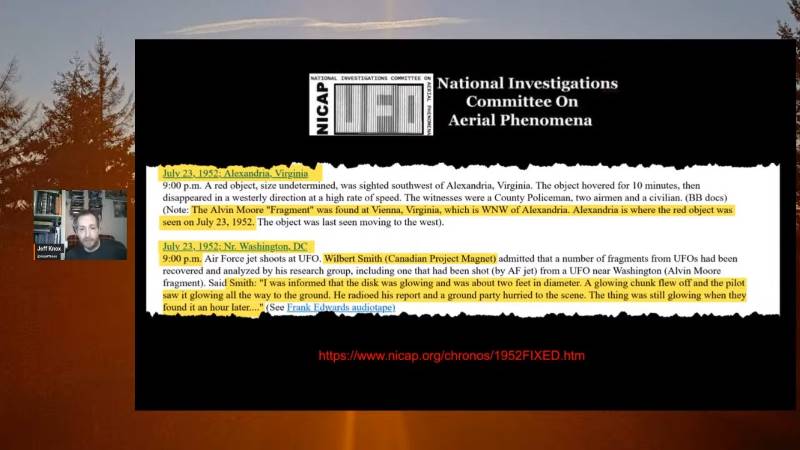
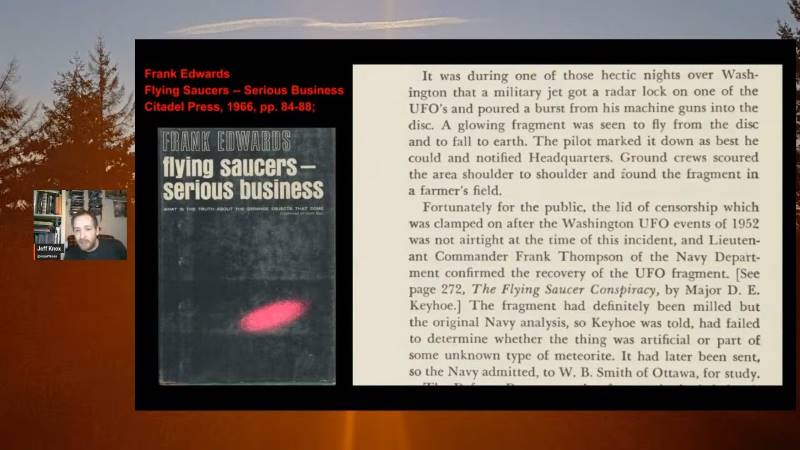
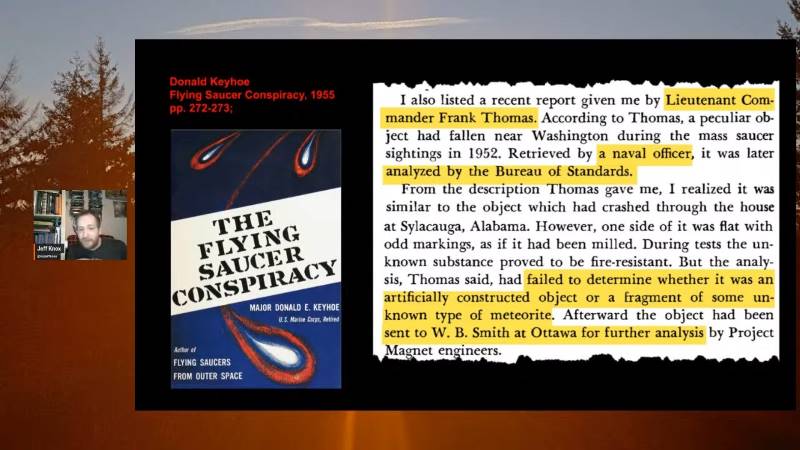
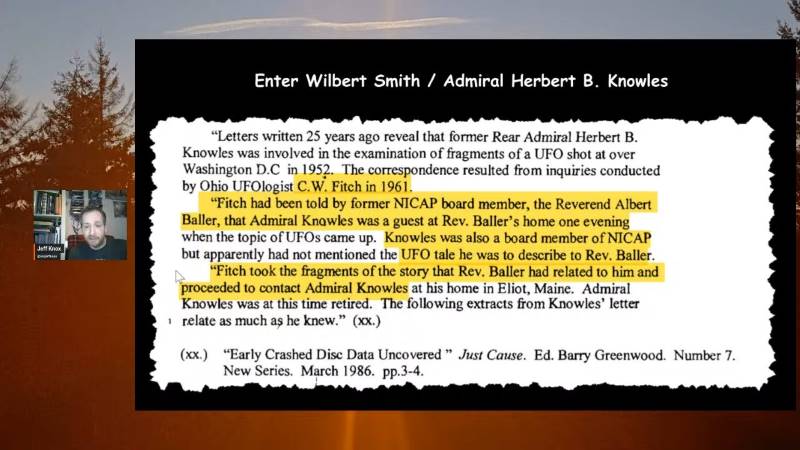
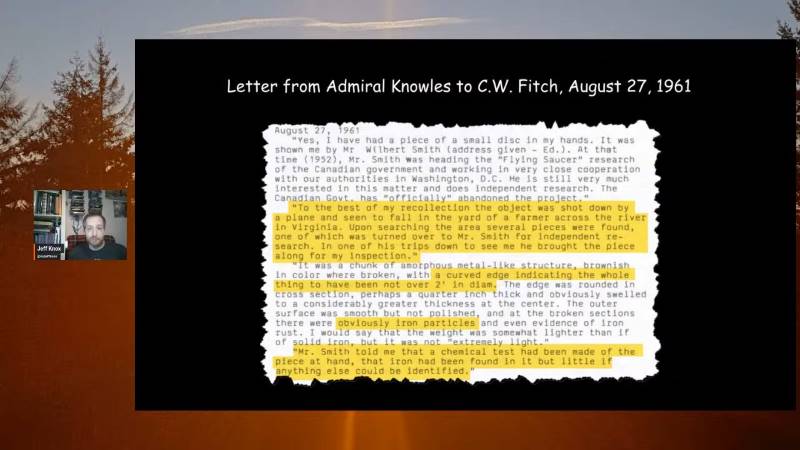
Whisper AI(large-v2 model) + DeepL(2024-07 model)
(offset=10:10)
そして今度はウィルバート・スミス版の話に入る。 ウィルバート・スミスはカナダの無線技師だった。 彼は電気工学の修士号を持っていた。 彼は運輸省に勤めていて、基本的に彼の仕事と職務は放送通信規格に関わるもので、無線機器の試験規格とか、使用される機器の試験とか、ラジオ局やテレビ局の周波数を決めるようなものだった。 (00:50:14)
その他いろいろ。彼の仕事は主に通信、放送、規格、その他だった。 でも、彼はUFOコミュニティでは、プロジェクト・マグネットと呼ばれるものに関わったことで最も有名で、カナダ政府のUFOプロジェクトとして大げさに宣伝されている。 しかし、私の研究では、ウィルバート・スミスはカナダのルー・アレッサンドロのようなものだと考えている。 彼のプロジェクトのほとんどは、実際には公式なものではなく、公式な地位もなかったことがわかった。 (00:50:42)
ほとんどは彼がひとりで、あるいは他の人たちと一緒にやっていたんだ。 そして、彼らは後に、プロジェクト・マグネットはUFOとは何の関係もないとまで言い出したんだ。 磁気特性と磁場を研究するもので、スミスの趣味のプロジェクトで、彼に自分の時間でやらせていたんだ。 だから、カナダの公式UFO政府への彼の実際の関与はせいぜい大雑把なものだが、とにかく広く知られているのはそういうことだ。 (00:51:12)
また、おそらくもっと有名なのは、ワシントンD.C.での放送会議の後、彼がサーベッカー博士と交わしたとされる手紙、つまり、サーベッカーが彼に言ったとされる、「我々は墜落円盤を持っている。 彼が知っていることに基づいたものではなかった。 だから、繰り返しになるけど、スミスにはいろんな理由で有名な人がたくさんいる。 (00:51:53)
しかしとにかく、ウィルバート・スミスはこの話に巻き込まれる。 1952年7月、ワシントンD.C. (00:52:15)
、ジェット機によってUFOの破片が撃ち落とされたというウィルバート・スミスの主張に再び注目が集まった。 スミスの話のバージョンは、見ての通り非常に似ているが、ムーアの話にUFOのような要素が付け加えられたものである。 1966年に出版されたフランク・エドワーズの本によれば、1952年の夏、ワシントンD.C.の近くでUFOの破片が回収された。 直径2フィートの光る円盤から発射され、1ポンドの破片が飛び散った。 (00:52:42)
ムーアのサンプルは、その一部を切り取る前は1ポンド近くあったことを思い出してほしい。 そしてその1ポンドの破片は地上チームによって回収された。 アメリカ政府はこの断片をカナダ政府に貸与していたのだが、コンドンパネルは基本的にこの主張は虚偽である可能性が高いと判断した。 コンドンパネルは本質的に、これらの主張は虚偽である可能性が高いと判断した。 (00:53:07)
そして私は当時、それに関するいくつかのスレッドも書いていた。 それで、また注目されるようになったんだ。 スミスのバージョンで見ることができるように、ムーア事件と同時刻とされ、様々なリストで見ると、1952年7月23日午後9時と全く同じ時刻になっている。 米海軍の戦闘機がこの直径2フィートの光る円盤に発砲し、この1ポンドの破片をはじき飛ばした。 (00:53:31)
、スミスが詳しく説明する。光る円盤、円盤は光っていて、直径は2フィートほどだったと聞いた。 パイロットはそれが地面まで光るのを見た。 彼は無線で報告し、地上部隊がその様子を聞いた。 1時間後に発見されたが、まだ光っていた。 現時点では、パイロットがどこで、誰からこのことを知らされたのか、正確にはわかっていない。 (00:53:53)
さて、ウィルバート・スミス版のこの話は、アロー社の報告書でも触れられているように、ラジオ放送作家のフランク・エドワーズが1966年に出版した著書『空飛ぶ円盤、真剣勝負』(1966年オリジナル版)で初めて広く知られるようになった。 そしてこの版では、フランク・エドワーズの報道の中で、彼はドナルド・ケホーの1955年の著書『空飛ぶ円盤、陰謀』でこの話が最初に言及されていることを指摘している。 (00:54:23)
ここでまず気づくかもしれないが、彼はこの話をフランク・トンプソン中佐から聞いたと言っている。 これは間違いなので、覚えておいてほしい。 この間違いは、後にコンドン・プロジェクトがフランク・トンプソンという人物の記録を見つけようと試みたが、何の成果も得られなかったときに、さらに深刻化することになる。 彼らが探すべきだったのは、フランク・トーマス中佐だったのだ。 (00:54:45)
フランク・トーマス中佐は、アメリカ海軍の小さな私的UFO研究を実際に指揮していた人物であり、ブルーブック時代にはエドワード・ルペルトの海軍の連絡相手であった。 彼はまた、ドナルド・ケーホー(Donald Kehoe)の友人であり、情報源でもあった。彼は、後に彼の著書で発表されることになる複数のUFO事例を提供した。 私はトーマスに関する情報をもっと見つけようとした。 彼について何かを見つけるのはちょ��っと難しいんだ。 (00:55:07)
私が見つけた唯一の言及のひとつは、ルペルトがスティーブン・パウザーニに、空飛ぶ円盤に関係するヨーロッパ旅行のことで会いに行こうとしたときに、彼とルペルトが会ったことだった。 そしてパウザーニに会う前に、彼はUFOについてフランク・トーマスに話を聞くために立ち寄ることにした。 フランク・トーマスという名前だった。 そして、最初の記述を見るとわかるように、この話はフランク・エドワーズによって直接引用されたり、参照されたりしている。 (00:55:41)
ドナルド・ケーホーは、ムーアの話が歪曲される前の、より基本的な要素を含む基本的な話を挙げている。 ケーホーは、トンプソンではなく、フランク・トーマス中尉から報告を受けたことを報告している。 トーマスによれば、1952年の大量円盤目撃の際、ワシントン近郊に奇妙な物体が落下したという。 それは海軍士官によって回収され、アルビン・ムーアであることがわかった。 (00:56:10)
それは基準局によって分析された。 これが我々が知っているムーアの話である。 ワシントンD.C.近郊で、目撃された時期に奇妙な石のような物体が発見された。 海軍士官が関与している ムーアは実名を出さないよう求めていた この記事を掲載するなら、私はD.C.近郊の海軍士官だと言ってくれ、と言っていた。 (00:56:30)
そして、ムーアの話と同じように、彼はそれを基準局に分析させた。 彼らはその物体を特定するのは難しかった。 その後、その物体はさらなる分析のためにオタワのW.B.ウィルバート・スミスに渡された。 つまり、ストーリーの最初のバージョンでは、撃墜はなく、た�だ空から飛来したというだけなのだ。 では、撃墜の話はどこから来たのか? その時点では入っていないからだ。 (00:56:55)
空から来たという暗示だけだ。 つまり、撃墜された物体から来たということを暗示しているのかもしれない。 撃墜の話は少し後にウィルバート・スミスとアルバート・ハーバート・ノウルズに入る。 1986年3月号の『ジャスト・コーズ』(UFO秘密保護に反対する市民の会)のニュースレターで、彼らはバリー・グリーンウッドとピーター・ガーステンと一緒に、情報公開グループのようなものだった。 (00:57:21)
そして彼らは政府のUFOファイルを政府から取り出そうとし、訴訟を起こした。 (00:57:26)
そして彼らのニュースレターには、フィッチがNICAPの元理事から、これはオハイオのUFO学者C.ウェスリー・フィッチだが、アルバート・バラード牧師がNICAPの理事であり、同じくNICAPの理事であったアブナー・ノウルズがある晩バラード牧師の家に客として来ていて、その時にUFOの話題が出たと書かれている。 ノウルズもまたNICAPの理事であったが、その夜バラード牧師に話すことになったUFOの話については、以前には触れていなかったようである。 (00:57:59)
フィッチはバラード牧師が彼に語ったこの話の断片を持ち帰り、メイン州エリオットのアブナー・ノウルズの家に連絡を取った。 私たちは、1961年初めのある時点で、アルバート・バラードがノウルズから聞いたこのUFOの破片についての話を、このUFO研究家C.ウェスリー・フィッチに伝えたことを知った。 フィッチはさらに詳しい情報を求める手紙をノウルズに送り、1961年8月27日にこの返事を受け取った。 (00:58:28)
そして彼は言う、そうだ、私は小さな円盤の破片を手にしている。 ウィルバート・スミスが見せてくれたんだ。 当時(1952年)、スミス氏はカナダ政府の空飛ぶ円盤研究の責任者であり、ワシントンD.C.の当局と非常に緊密な協力関係にあった。 彼は今でもこの問題に強い関心を持ち、独自の研究を行っている。 カナダ政府は公式にこのプロジェクトを放棄した。 (00:58:50)
私の記憶では、この物体は飛行機によって撃墜され、バージニア州の対岸の農家の庭に落下したようだ。 その地域を捜索したところ、いくつかの破片が見つかり、そのうちの1つがスミス氏に引き渡された。 スミス氏は私に会いに来たとき、この破片を私の検査用に持ってきた。 それは茶色っぽい色をした非晶質の金属のような塊で、割れているところは縁が曲がっており、全体の直径は2インチもなかった。 (00:59:15)
縁は丸みを帯びた断面で、おそらく4分の1インチの厚さがあり、中心部では明らかにかなり大きな厚さに膨らんでいた。 外側の表面は滑らかだったが、研磨されておらず、割れた部分には明らかに鉄の粒子があり、鉄錆の形跡さえあった。 重さは鉄の塊よりはいくらか軽かったが、極端に軽いということはなかった。
スミス氏によると、手元の破片を化学的に検査したところ、鉄は検出されたが、それ以外はほとんど確認できなかったとのことだMr. さて、円盤の大きさの推定は、実際の目撃証言ではなく、その割れた破片の湾曲が円柱の形状に由来するという仮定に基づいて、物体の大きさを外挿したものに基づいているようだ。 (00:59:55)
だから、彼らが破片の測定によって2フィートと推��定した可能性は十分にあり、それが物体が2フィートだと考えた理由だ。 唯一の問題は、ノエルが1952年にその破片を見たということだが、実際にはありえないことだ。 (01:00:13)
スミスがその作品を手にしたのは1954年末のことで、1955年初頭にはすでにムーアの手に戻っていた。 だから、彼は1952年にその作品を実際に見ることはできなかった。 しかし、彼は1961年10月にも手紙を送っており、その手紙には、彼が見せられたと記憶している作品をスケッチしている。 (01:00:53)
、私たちが持っている写真と図面を比べてみても、それが本当に役に立つかどうかはわからない。なぜなら、これらの写真は破片が壊れる前に撮られたと思われるもので、図面は記憶によるものだからだ。 とはいえ、とにかく載せてみた。 空飛ぶ円盤の破片が実際に写真に写っているなんて信じられないと思うかもしれないし、アメリカ政府が空飛ぶ円盤だと思ったら、その破片をカナダ人のような最も親しい同盟国にまで配るなんて信じられないと思うかもしれない。 (01:01:31)
さて、研究者の中には、もし十分な量の破片があるのなら、共有するのに十分な量があるのではないか、と言ってこれを正当化する人もいる。 それは私には全く理解できない。 しかし、ある時点で、おそらくノウルズに手紙を送ったとき、彼は同じような話をした。 そして10月23日の手紙の中で、スミスはこう書いている。 (01:01:58)
しかし、個人の手にもかなりの量がある。 はっきりしないが、彼は我々が話しているサンプルについて具体的に話しているとは思っていないようだ。 UFOの破片全般を指しているのだと思う。 彼は後��に、1959年1月11日に照明工学協会の地域会議でUFOについて話している。 (01:02:19)
彼はさらにUFOのハードウェアについて詳しく述べ、ハードウェアの様々なアイテムが存在することが知られているが、それらは通常、セキュリティの中に閉じ込められ、一般には公開されていないと述べている。 1961年11月、フィッチともう一人の研究者、オハイオ州アクロンのジョージ・ポポビッチは、ロバート・スミスとの電話インタビューを録音することができた。 ここで初めて、フィッチとポポビッチがUFOについて話しているのを聞くことができる。 (01:02:49)
彼の撃墜に関する証言は、ノウルズが語ったものと驚くほど一致している。 1952年、あなたはノウルズ提督に空飛ぶ円盤の破片を見せたと、共通の友人から聞いたのだが。 その発言は正しいかね?スミスだ。はい、正しい。 (01:03:07)
私はノウルズ提督を訪ね、その年、1952年にワシントンで小さな空飛ぶ円盤から撮影された破片を持っていた。私はそれを提督に見せた。 彼は、私の親指には空飛ぶ円盤の破片があり、それはあなたの空軍がほんの短期間だけ私にくれたものだ、と言った。 フィッチ、ワシントン近郊のUFOの破片についてはどうなんだ? (01:03:25)
それは従来の材料と違っていたか? 何か変わったことはなかったか? スミス。経緯はこうだ。 パイロットは直径2フィートほどの光る円盤を追っていた。 フィッチ 失礼ですが、2フィートと言ったか? スミスだ。そう、その通りだ。私は円盤が光っていて、直径が2フィートほどだと知らされた。 私はそれが地面まで光っているのを見た最初の人間だった。 (01:03:49)
彼は無線で報告し、地上部隊が現場に急行した。 約1時間後に発見されたが、まだ光っていた。 全体の重さは約1ポンドだった。 貸してもらったのはその3分の1ほどだった。 ノコギリで切断されていた。フィッチ 分析結果はどうだった?スミスだ。 鉄さびがあった。鉄さびがあった。 (01:04:10)
本当にオルソケイ酸マグネシウムのマトリックスの中にあった。そのマトリックスには15ミクロンの球が何千個も散らばっていた。 あなたはそれを返却しなければならなかったと言った。 空軍に返したのか? いや、空軍ではない。それよりずっと上だ。 フィッチだ 中央情報局か? スミスだ。苦笑している。申し訳ないが、諸君、それ以上踏み込む気はない。 (01:04:34)
私が言えるのは、それが極秘グループの手に渡ったということだ。 その問題、つまり彼らの身元は、あなた自身で解決しなければならない。 知っての通り、このムーアのサンプルは短期間CIAの手に渡った。 だから、それは一致する このインタビューの中で、スミスはムーアの断片とほぼ同じような形でこの物質について説明している。 (01:04:51)
彼はそれが3つに切断された破片であったと述べている。 私たちは基準局から3つの破片を示す3枚の写真を持っており、そのうちの1枚をどこで入手したかを推測することができる。 彼はこれをムーアの破片と同じ1ポンド(約1.5kg)だと述べている。 そして、それは3つに切断された破片であったと言う。 (01:05:09)
その破片のひとつをどこで手に入れたかは推測できる。 彼はこれを、ムーアの破片と同じようにおよそ1ポンドだと述べている。 さらに重要なことに、彼はこの破片を、15ミクロンの球が何千個も散らばったオルソケイ酸マグネシウムのマトリックスであると述べている。 ムーアの破片のほとんどが正ケイ酸マグネシウムを含み、微小球、鉄微小球が全体に含浸していたことを思い出してほしい。 彼らは明らかに、分析された同じ破片について話しているのだ。 (01:05:31)
スミス氏はこの破片の話を又聞きしたようだが、米軍ジェット機の撃墜という余計な要素に、この破片をばらばらにした直径2フィートの円盤をどうにかくっつけた。 (01:05:43)
フランク・エドワーズはスミスの話を盛り込み、フィッチとポポビッチと電話で行ったインタビューから部分的な記録を取り、それを彼の著書『空飛ぶ円盤シリアス・ビジネス』に掲載した。 エドワーズは、ケーホーの著書『空飛ぶ円盤の陰謀』で見つけたオリジナルのストーリーを、ムーアの記事に結びつけたようだ。 その時点で、これらのストーリーは融合され、比較的平凡なムーアのストーリーは忘れ去られた。 (01:06:15)
ムーアの話は、元々はケーホーによる『空飛ぶ円盤の陰謀』で語られただけで、それも短い話だ。 現在、スミス版のストーリーは、エドワーズによって報告された断片のままであり、他の2つのハードウェアのケースとともに、コンドン・パネル・レポートで調査され報告されている。 そして、アロー・リポートは、この事件に関するコンドン・パネルの仕事に直接言及している。 そして、彼らはコンドンパネルが発見したことを報告しただけで、それ以上のことはしていないと思われる。 (01:06:45)
多くの人が、アロー・レポートが発信するいくつかの悪い情報のために、ある種の�悪評を与えている。 しかし多くの場合、それはアメリカ政府がすでに決定した結果を参照しているだけだと思う。 この場合、彼らが実際に調査したとは思えない。 彼らはコンドン・プロジェクトが発表したものを参考にし、その結果を報告書にまとめたのだ。 (01:07:07)
さて、この撃墜事件は、コンドン報告書の「UFOの部品」あるいは「UFOの機器」と呼ばれるセクションで取り上げられている。 そして、この報告書は、エドワーズとスミスが報告したのと基本的に同じ話を繰り返している。 コンドン委員会のプロジェクト・コーディネーターであるロバート・ログは、ブルーブックに尋ねた時、1952年7月の撃墜事件の記録を見つけることができなかった。 (01:07:36)
しかし、そのような出来事は彼らのクリアランス・レベルを超えているかもしれないと理解し、彼らはこの話についてコメントを求めて空軍本部に連絡を取り、彼らが何を見つけたかを確認した。 そして彼は情報を求めるこの手紙を送った。 そして彼らは、海軍省情報部長の指示により、J.W.クリントンから直接返事を受け取った。 この回答には、海軍の全記録を徹底的に調査したことが記されている。 (01:08:06)
そしてまた、1952年7月、あるいは他のいかなる時期にも、海軍のジェット戦闘機がUFOと遭遇したという記述を明らかにすることはできなかった。 彼らはさらに、アメリカ海軍はワシントンD.C.地域上空で実弾を搭載したジェット機を飛ばすことはないと述べている。 海軍のジェット機が実弾を搭載するのは、はるか沖合の制限された訓練場で行われる射撃練習の時だけである。 クリントン氏はまた、防空・迎撃機能は�米空軍の機能であるとも指摘している (01:08:31)
クリントン氏はまた、防空・迎撃機能は米空軍の機能であるとも指摘している。 海軍が首都上空で提供する能力を持たない迎撃機能を運用することは、空軍の任務を簒奪することになる。 さらに、フランク・トンプソン中佐の記録が見つからなかったのは当然である。ドナルド・キョウが1955年に出版した本に書かれているように、正しい名前はフランク・トーマスなのだから。 (01:08:55)
コンドンパネルは、スミスのひどく解釈された事件の事実をエドワーズが報告したことに基づいて動いていたのだから、この事件に関するファイルを見つけられなかったからといって、コンドンパネルを非難することはできないだろう。 (01:09:11)
見つけるべきファイルはなかった。 しかし驚くべきは、報告書にムーアの断片についての言及がないことだろう。 そして、2つのケースを一緒にしていないようで、個人的には少し奇妙に思う。 というのも、ムーアの破片に関するコンドンプロジェクトのファイルは、スミス・ノウルズの破片に関するファイルよりもかなり大きいからである。 (01:09:39)
実際、彼らがスミス=ノウルズの断片について持っているファイルは、私がすでにこのスライドショーに掲載した数通の手紙から成っている。 ムーアの作品に関する彼らのファイルは、実際にはもっと重要なものだ。 つまり、彼らはスミス=ノウルズとムーアの作品について、実際にはすべて知っていたのだ。 そして、ロウはアルヴィン・ムーアと彼の石とUFO理論について何度もやりとりしていた。 そして、彼をプロジェクトのコンサルタントとして�迎え入れることも検討した。 (01:10:12)
実はロウは、ムーアの作品とムーアの話をアート・ランダールから密告されていた。 アート・ランダールは国立写真解釈センターの創設者だった。 彼は1953年から1974年に引退するまで、基本的にCIAのトップ写真分析官だった。 ルンダールは、1953年にこのワシントン国家予備軍の会合でムーアと出会い、UFOの話題への共通の関心から親しい友人となった。 (01:10:38)
ルンダールは生涯のUFO愛好家で、政府が収集したUFO写真事例の分析に携わっていた。 そしてムーアとルンダールは、初めて会ったときからUFOについて話し始めた。 やがてルンダールは、ムーアが発見した物体の話に感銘を受け、これは何か特別なものかもしれないと思った。 そこで2回目の会合で、ムーアはルンダールにその石の写真を見せた。 (01:11:05)
そしてまた、これらの写真はかなりひどいものだった。 そしてルンダールは、これに基づいて断定的な判断を下すのは難しいが、とにかく何らかの合金であることは間違いなさそうだと言った。 だから13年後、コンドン・プロジェクトが始動し、写真分析官を探していたとき、ルンダールは理想的な人選だったと思われる。 彼は1967年2月20日に、エドワード・コンドン、ロバート・ロウ、デビッド・サンダースに対して、UFO事件の分析における写真解析の方法論、特に写真測量法と写真測量の使用法についてブリーフィングを行った。 (01:11:43)
でも結局、彼は写真分析官になることを断った。 他に用事があったとか、そのプロジェクトに関わりたくなかったとか、そういうことだったんだろう。 しかし、彼はこの会合で、ムーアの�話をコンドン・プロジェクトと共有したに違いない。 というのも、ロウが12月8日にトーマス・ラッチフォード博士に書いた手紙に戻ると、ルンダールがミシシッピのアル・ムーアという弁理士について触れていて、彼は大気圏を落下した後に発見された金属片の分析報告書を所持していると思われる、と書いてあるからだ。 (01:12:19)
そしてルンダールはその話を彼らにした。 (01:12:22)
ムーアはその年の12月にこの手紙を書き、この件を追跡調査して何かわかるかもしれないと言う。 そこでロウはムーアと電話で連絡を取ることにした。 そして何度かムーアと連絡を取ろうとしたが、ムーアの電話は通じなかったらしい。
(01:12:51)
しかし、彼は結局1968年1月5日にムーアと電話で連絡を取ることができた。 ムーアは、1952年の最初の事件以来、17、16年もの間、スカイ・ストーンの理論に没頭し、この情報を収集してきた。 (01:13:26)
そして彼は、最終報告書に載せるための報告書を書きたいと申し出た。 ムーアが最初にルペルトに郵送した手紙と報告書のコピーをムーアに送り、ロウはブルベックのファイルからあなたの報告書が見つからないという手紙をムーアに送った。 そして彼はそのすべての情報のコピーを送った。 (01:13:47)
そして最終的に、ファイルは後に国立公文書館で発見され、空軍はその手書きの手紙と分析の通信を見つけることができた。 そして彼らはそれを空軍にも送った。
(01:14:06)
しかし結局のところ、ロウはムーアや彼の話をコンドン・プロジェクトの仕事に関与させる理由をほとんど見つけられなかった。 そして、1月17日付のラッチフォードへの別の手紙の中で、彼はこう述べている。 もし彼が、なぜ私たちがこの石を調べなければならないのか、そしてそれがUFO現象と本当に関係があるように見えるのかについて説明してくれるなら、私たちはそれをフォローアップしよう。 (01:14:28)
そしてまた、ゼッケルや他の研究者たちは、なぜムーアがコンドン・レポートに含まれなかったのかについて、美辞麗句を並べている。 真実は非常に単純だと思う。 UFOと関係があると考える理由はない。 仮にそのサンプルや報告書を入手できたとしても、それはUFO事件とは無関係の比較的ありふれたスラグであるとすでに断定されているのだ。 (01:14:46)
UFOが目撃されたわけでもなく、本当に使えるものもなく、コンドンプロジェクトがスカイストーンやスカイアイランドに関する彼の持論にこれ以上関わる理由もない。 そしておそらく、彼らは寛大にもエドワード・スミスの話を別の出来事として考え、そのように検証しようとしていたのだろう。 どのような理由であれ、あるいはおそらく、より人気のある話であったため、より緊急に取り上げるべき話であったためであろうが、スミスのバージョンはコンドン・プロジェクトの報告書に掲載され、ムーアのバージョンは出版されず、UFO文献の言説からほとんど消えてしまった。 (01:15:18)
しかし、不思議なことに、彼らはエドワードの本を引用しているにもかかわらず、ウィルバート・スミスやノウルズについて触れていない。 (01:15:29)
そしてコンドン・プロジェクトのファイルには、ノウルズとスミスについて明確に言及している。コンドン・プロジェクト・アーカイブスのノウルズに関する数通の手紙の中で、この事件について話しているとき、彼らはノウルズとスミスについて特に言及している。 しかし、スミスとノウルズは荒唐無稽な理論で知られ、何でも信じようとする。 (01:15:55)
だから、それらの名前を省くことで、あまり信用できない人たちのケースになぜ注意を払うのか説明しなければならないという不快な状況を避けたということだ。 ノウルズはフランシス・スワンという有名なコンタクティと関係がある。 フランシス・スワンはノウルズの隣に住んでいたコンタクティだ。 エベネガーの映画『UFO、それは始まった』を見たことがあるなら、ロバート・フレンドがAPAと話をして、窓の外を見るように言われ、そこにUFOが見えると言うシーンがある。 (01:16:32)
これはすべてフランシス・スワンによるものだ。 コンタクティであるフランシス・スワンは、ノウルズを信者にした。 ノウルズは海軍情報局を説得して、フランシス・スワンと話すために2、3人を派遣させた。 だから、この人たちはみんなコンタクティズムや、UFO学のフリンジサイドのような他のものすべてに本当に深く関わっているんだ。 そして、ノウルズはベティとバーニー・ヒルからそれほど遠くないところに住んでいた。 (01:17:00)
実際、彼が死んだとき、アダムスキーの本とか、彼の本の多くは、ノウルズの奥さんからベティ・ヒルに渡ったんだ。 7月23日、フェアファックス郡の警察官たちが、バージニア州アレクサンドリア上空で赤い物体が10分から15分ほどホバリングしているのを目撃した。 (01:17:28)
残念なことに、この地図を見てもらえれば分かるが、アレクサンドリアはウィーンの南東にある。 そしてこれはすべてワシントンナショナル、ダレスの経路に沿っている。 なぜなら、第一に、彼らが物体を発見したとき、UFO物体は目撃されていない。 (01:17:53)
地面に落ちていた。 さらに重要なことは、この破片は23日の午後の早い時間に採取されたものであり、その日の午後9時に起きたこの事件とは何の関係もないということである。 しかしムーア氏は、ワシントンD.C.周辺で目撃情報が相次いでいる最中に、自分の破片が空から降ってきたと信じ、それが疑惑の事件の数日前、つまり19日か20日に起こったことを思い出し、ニュースで報道されたように、この光る天体の破片に違いないと根拠もなく思い込んだ。 (01:18:23)
しかし、この物体がUFOから来たと考える根拠は、ムーアが「木が傷ついたから空から来たに違いない」と説いた以外には、全くなかった。 (01:18:34)
さて、私は何が起こったと信じているのか? これは私も、研究者のマイケル・ソードとほとんど共有していると思うが、次のような説である。 ムーアは雇い主であり隣人でもあるランハム氏からサンプルを受け取った。 不思議に思った彼は現場を調査し、最終的には海軍に報告し、サンプルを基準局に送ってテストしてもらった。 そこでは誰も特に興味深いとは思わなかったので、サンプルはムーアに返却された。 (01:19:03)
海軍のフランク・トーマス中佐はムーアを説得し、彼の話を報告書と手紙にまとめ、ルペルトと空軍に送った。 彼はまた、よく知られているように、その報告書をケーホーにも渡し、ケーホーは後に、1955年の著書にその話を載せている。 空軍はスラグにほとんど�興味を示さず、ムーアに返したが、ムーアはCIAでの仕事を通じて、カナダからCIAに貸し出されていたグッドスピード大尉に会い、彼にサンプルを渡してカナダに持ち帰らせ、ウィルバート・スミスの手に渡った。 (01:19:34)
さて、撃墜の話がどのようにして、またなぜスミスによってムーアの話に付け加えられたのか、確かなことは言えない。 そしておそらくは、サンプルについて得た不正確なセカンドハンド情報を装飾するために、スミス自身が付け加えたのであろう。 しかし、実際には、それは中継船によって受信されたのかもしれない。 少しクレイジーで突飛な話に思えるかもしれないが、実は前例がある。
(01:20:13)
UFOの破片とされるものについて語るのに、霊媒から受け取ったメッセージを使ったのは、実はこれが初めてではない。 1960年6月、ケベック・シティからおよそ20マイル上流のセントローレンス川岸で、3000ポンドの謎の金属片が発見された。 実際には2つの破片が発見された。 800ポンドの破片があったようだ。 (01:20:39)
3,000ポンドの破片は、実際にはもっと川の中で発見されたはずで、多くの時間水没していた。 800ポンドのほうは、干潮時に岸に近いところで見つかった。 だから正確には岸辺ではなかった。 オタワの空飛ぶ円盤クラブの創設者は、表面に何千もの小隕石が埋め込まれていると信じているので、この大きな金属の塊は地球に落下する前に宇宙で過ごしたに違いないと結論づけた。 (01:21:10)
さらに彼は、その物体は、金属は太陽系に突入した後に災害に見舞われた大型宇宙船の一部であったと考えている。 このような結論を出した人物は誰なのか��? カナダのプロジェクト・マグネットの元責任者、ウィルバート・スミスに他ならない。 スミスの地位と信頼性から、これらのサンプルのテストに多くの労力が費やされた。 (01:21:34)
そして最終的に、ムーアの断片といくらか似た結果が得られた。 (01:21:39)
つまり、それは別の種類の鉄鋼プロセス、高マンガン鋼の製造プロセスから作られたスラグだった。 しかしこのスラグは、50マイル(100マイル)ほど上流にあるソレル鋳物工場で生産された可能性が高いと、彼らは断定した。 宇宙船が太陽系に入ってきた大きな船の一部だったという話はどこから得たのだろう? それはある媒体から得たものだ。 (01:22:05)
。スラグが地球的なものであるという強力な証拠があるにもかかわらず、スミスはその可能性が高いと認めているにもかかわらず、彼とこのグループは、トランスミディアム船を通して得たという空想的な話を提供し続けている。 そのため、彼が光り輝く円盤に向けてジェットを噴射したという話をどこで手に入れたのか、それを断定することはできない。 (01:22:36)
ムーアがレーダーから外れてしまったUFOが上空を飛んでいたと信じているので、それが自然な仮定である可能性もある。 (01:22:58)しかし、ムーア氏は、このUFOが上空を飛んでいて、レーダーから落ちたと信じている。 (01:22:58)
しかし、それはとても単純な話だ。 それは何らかの方法で撃たれたか破損したに違いない。 しかし、彼が過去にしていたことを知っているように、霊媒を使っていたのか、あるいは彼が自分で外挿し、詳細を装飾していたのか、ストーリーが追加されていった。 やがてオハ��イオのUFO調査員、C.ウェスリー・フィッチとジョージ・ポポビッチの知るところとなり、彼らはノウルズとスミスを追跡し、彼らの言い分を聞き出した。 (01:23:26)
フランク・エドワーズは結局、ケーホーの本から話を取り出し、1961年にフィッチとポポビッチが語った話と組み合わせた。 そして彼はそれを1966年に出版した。 あとは基本的に歴史となり、人々は何十年もかけてこの事件を調査してきたが、当初の事実からはかなり歪んでしまった。 (01:23:49)
というわけで、残念なことに本当に撃墜事件はなかった。 そして、本当に起こったと信じる理由もない。 この金属片に関連したUFO目撃情報さえなかった。 しかし、スミスとムーアの破片が同じものであることはほとんど疑いようがないと思う。 私たちは、スミスがグッドスピード船長によってカナダから持ち帰られたムーアのサンプルを、エンジェル・ヘアのような物質に変化したゼラチン状のボブとともに受け取ったことを知っている。 (01:24:17)
描写、化粧、断片とされるものはほとんど一致している。 ストーリーも関係者もほとんど同じように一致する。 唯一の違いは、その物体がどのようにしてヴァージニアのこの田舎の農場に行き着いたのかという点である。 そしてそれは、おそらく私たちが知ることのないものだ。
(01:24:37)
しかし、UFOの仕業とは思えない。 そして、これらが異なるケースだと信じるには、スミスが同時に起こった出来事から2つのサンプルを受け取ったと信じるしかない。 つまり、2機のUFOが同時に撃墜されたか何かした。 そして彼は同じ場所から2つのサンプルを得た。 しかし、それらは異なっている。 (01:25:02)
しかしスミスは2つ目のサンプルについては言及していない。 彼は1つのサンプルにしか触れていない。 つまり、この2つが異なるケースである可能性を信じるのは、信憑性にかけると思うんだ。 多くの研究者が、この2つのサンプルと破片は同じものであると断定している。 最後に、ムーアについてもう少し詳しく述べたい。 (01:25:23)
そして言ったように、ムーアはとても興味深い人物だ。 この出来事は、彼がUFOの話題に飛び込むきっかけとなった。 彼は最終的に、1979年にグレッグ・バーカーのCaesarian Pressから『Mysteries of the Skyman』というタイトルで本を出版することになる。 そして、1977年にティモシー・ベッカーによって再び出版された。 彼はとても興味深い人物だった。 ティモシー・ベッカーだ。 (01:25:47)
この本の中で彼は、チャールズ・フォートとさほど変わらない理論を展開している。 彼は、上空に浮かぶ空島があって、そこから石がやってくると信じていたんだ。 そしてスカイマンたちがいる。 そのスカイマンたちはほとんど善良だったが、極悪非道な集団もいた。 (01:26:09)
そして彼らは、動物から血を抜いたり、人を殺したり、あらゆる種類の極悪非道な活動に関与していた。 そしてこの本では、その前の数年間で、彼は基本的にこの空島から来たと思われる1000個以上の石を集めることになる。 誇張しているわけではない。 ほとんど毎回、この男は地上で石を見つけると、それが空の石だと思うんだ。 (01:26:33)
もし彼が本の中で地面に落ちているゴミを見つけたら、それは天空の化学物質だと思う。 それは空島から来た空の化学��物質だ。 コンクリートを引っ掻く線を見つけたら、それはスカイマンのものだと思う。 だから彼はこの本全体を費やして、基本的に彼がいかに何千ものゴミや石や瓦礫のようなものを集めてきたか、そしてそれがスカイ・アイランドから来たものだと信じていること、スカイマンたちが彼や他の人々をスパイしていることについて話しているんだ。 (01:26:57)
そしてそれはかなり突飛な種類の本だ。 だから、僕は大目に見てあげたいし、みんながこの本を読まないのも不思議じゃない。 そして、それは塩の粒のようなものだ。 そして、なぜ人々が彼のプロジェクトに関わりたくなかったのかも不思議ではない。 実際、ジェームズ・マクドナルドは1970年5月、この件について彼に電話をかけてきた。 (01:27:22)
そしてまた、彼は当時ミシシッピに滞在していたと思う。 (01:27:28)
そして彼は消防署から彼に電話をかける。 ムーアは、マクドナルドがスカイマンに見張られていると妄想しているからだと考えている。 そして彼はホテルから電話せず、スカイマンに盗聴されるのを避けた。 しかし、彼は結局彼と話す。 ロウと電話で話したときのように盗聴されてはいなかった。 電話は明瞭だった。 しかし、マクドナルドは彼にあまりいい印象を持っていない。 (01:27:52)
彼はこの直後、NICAPのディック・ホールに手紙を書き、基本的にムーアがいかに変人であるかを述べている。 彼は地球空洞説やその他すべてのおかしな説を信じている。 ムーアは地球空洞説やその他のおかしな説を信じている。 基本的に、彼はまともに相手にすべきではない。 だから、もし彼が今日出てきたとしたら、いわゆるUFOの人たちが持っている経歴の中で、私が今まで見た中で最も印象的な経歴を持っている人なんだ。 (01:28:18)
つまり、歴史において素晴らしい経歴を持っている。 でも、彼は本質的に、自分の理論が本当に突飛だったんだ。 そして彼は、なぜスミスが間違った話をしたのかについて、特にCIAか空軍の隠蔽工作だという説を唱えていた。 彼がどうやって1ポンドの天空の石を見つけたかという本当の事実。 私は彼の論理に正確には従えない。 というのも、ジェット戦闘機が何かを撃ち落としたというストーリーを作ることが、ある出来事とは何の関係もない森の中で彼が石を見つけたことよりも、どうして良い隠蔽工作になるのだろうか。 (01:28:55)
しかしそれは、スミスが偽装工作の一部である可能性のあるインチキ話を吹き込まれたという彼の理論だった。 しかし彼は基本的に、スミスが断片の一部を持っていたことを広く認めている。 そしてこの話は、歪曲されたバージョンで再び短く言及された。 プロジェクト・ブルー・ブックのステータス・レポート第10号にも、同じようなことが書かれている。 ただ、9月12日に起こったことで、彼が石のサンプルを見つけ、それがブルーブックに送られた、とだけ書かれている。 (01:29:26)
そして彼らは基本的に、それが平炉から出た一般的なスラグだと断定した。 そして、彼らがどうしてここで詳細を間違えているのかはわからない。 これは彼が分析したクロスレターの直後に発表されたものだ。 つまり、実際に起こった日付ではなく、手紙や報告書に書かれた日付を見ているため、日付を間違えることがあるのだろう。 しかし、この話はそこでも少し触れている。 (01:29:49)
最後に、彼が持っていた飛行船の特許をいくつか紹介しよう。 飛ばない奇妙な飛行船だった。 着陸もしなかったし、水平飛行もしなかった。 いつも斜め上を向いていて、後部に着地して、後部から離陸するんだ。 (01:30:08)
そしてもちろん、彼はこれらを作ることはなかった。 しかし、これは彼の数ある特許のひとつに過ぎない。 彼の特許の多くは、ボートや浮き輪、傷つけずに転がる車、その他奇妙なものに関するものだった。 (01:30:21)
でもとても面白い人だよ。 でも、とても面白い人だよ。 サンプルは同じで、同じ話であることは明らかだ。 もし、私の説明が不十分で、これを読んで理解できなかったり、私に同意しなかったりする人がいるとしたら。 コメントで教えてくれれば、理解できなかった点に対処できるかどうか考えてみるよ。 (01:30:47)
なぜなら、この時点ではっきりしたと思うからだ。 同じ話だ。 同じ事件だ。 ただスミスが、実際には起こらなかった撃墜の話をボルトで固定しただけだ。 それだけだ。 長いプレゼンに付き合ってくれてありがとう。 1時間半もかからなかったと思う。 それでは。 (01:31:05)
▼展開
And Wilbert Smith was a guy that he was a Canadian radio engineer. He had a master's in electrical engineering. He worked for the Department of Transport, and he was essentially his job and duties involved broadcast communication standards, things like testing, like radio equipment testing standards and stuff for gear that was used, determining like the frequencies of radio and TV stations. (00:50:14)
And whatnot. His job was mostly in communications and broadcasting and standards and whatnot. But he is most famous in the UFO community for his involvement in something called Project Magnet, which has been kind of hyped up as the Canadian government's kind of UFO project. But from my research, I kind of think of Wilbert Smith as Canada's Lou Alessandro. It turns out most of his project wasn't really official, didn't have official standing. (00:50:42)
It was mostly him doing it on his own or with some other people. And they even, I guess, later came out and said Project Magnet didn't even have anything to do with UFOs. It was about studying magnetic properties and fields and that it was just Smith's hobby project that they let him do on his own time. So his actual involvement in official Canadian UFO governments is sketchy at best, but that's what he's widely kind of known for anyways. (00:51:12)
And he's also perhaps more famously known for a letter, supposedly a communication he had with Dr. Sarbecker after a broadcast conference in Washington, D.C., where Sarbecker allegedly told him, you know, like, we have crash saucers, the security is higher than that of the atom bomb, etc. (00:51:29)
Only problem is Sarbecker, I believe, later said that if he did say that, it was basically second, third hand rumors that he'd heard from people. Like it wasn't actually based on anything he knew. So, again, there's a lot of Smith's pretty famous for a lot of reasons, and many of them are kind of out there and don't hold up to substantiation when you kind of look at them. (00:51:53)
But anyways, Wilbert Smith gets involved in this story. And this is how I kind of get involved in this story again, is that on February 2024, the All Domain Anomaly Resolution Office released the first volume of its long awaited historical report and brought renewed attention to Wilbert Smith's claim about a piece of debris being shot off a UFO by a jet during the Washington, D.C. (00:52:15)
flap in July 1952. Smith's version of the story is very similar, as you'll see, but with an added UFO kind of element bolted on to Moore's story. And they sort of in the panel, they say, in Frank Edwards in a 1966 book, that a piece of a UFO was recovered near Washington, D.C. in the summer of 1952. It was shot off of a two foot diameter glowing disk and dislodged a one pound fragment. (00:52:42)
Recall, Moore's sample was close to a pound before they cut some of it off. And that one pound fragment was recovered by a ground team. The U.S. government had loaned this fragment to the Canadian government, and the Condon panel essentially determined that these claims are most likely false. And this story in the air report kind of got the debrief to publish a story on it. (00:53:07)
And I had done some threads on it back then as well. And so it kind of came back in the attention again. And as we can see in Smith's version, at allegedly the same time as the Moore case, and if you look like in various listings, they have them exactly the same time, 9 p.m. July 23rd, 1952. A U.S. Navy fighter jet fires on this two foot diameter glowing disk, dislodging this one pound fragment. (00:53:31)
Smith elaborates, I was informed that the glowing disk, that the disk was glowing and it was about two feet in diameter. A glowing chunk flew off and the pilot saw it glowing all the way to the ground. He radioed his report and a ground party heard the scene. The thing was still glowing when they found it an hour later. Now, again, we don't know exactly where he, who he was informed by about this at this point. (00:53:53)
Now, the Wilbert Smith version of this story, as the Arrow report mentions, was first brought to widespread attention by radio broadcaster Frank Edwards in his 1966 book, Flying Saucers, Serious Business, original 1966 version of the book. And in this version, in Frank Edwards' coverage, he points us to the very first mention of this story in Donald Kehoe's 1955 book, Flying Saucers, Conspiracy. (00:54:23)
The first thing you might notice here is that he says, he gets this story from a Lieutenant Commander Frank Thompson. Now, keep that in mind because that's actually wrong. And this error would later be compounded when the Condon Project attempts to find records of a Frank Thompson and had no success. What they should have been searching for was the Lieutenant Commander Frank Thomas. (00:54:45)
Lieutenant Commander Frank Thomas was the man actually heading up the US Navy's small private UFO study and was Edward Ruppelt's Navy contact during the Blue Book years. He was also the friend and source of Donald Kehoe, who he fed multiple UFO cases to that would be later published in his books. And I tried to find more information on Thomas. He's kind of hard for you to find anything about. (00:55:07)
One of the only mentions I found was a meeting between him and Ruppelt when Ruppelt was trying to go meet a Stephen Pausani, I believe, about a trip that he had made to Europe that involved flying saucers. And before he met with Pausani, he decides to stop to talk to Frank Thomas about UFOs. So the name was Frank Thomas. And as we see when we look in the first mention, the story directly quoted or referenced by Frank Edwards and again, 1955 edition of that book as well. (00:55:41)
Donald Kehoe lists a basic story that contains the more basic elements of the Moore story kind of before it got distorted. Kehoe reports how he received the report from Lieutenant Frank Thomas, not Thompson, as Edward later gets wrong and misspells. Kehoe states that according to Thomas, a peculiar object had fallen near Washington during the mass saucer sightings in 1952. It was retrieved by a naval officer, which we know to be Alvin Moore. (00:56:10)
It was analyzed by the Bureau of Standards. This is the Moore story as we know it. A curious, stony object was found near Washington, D.C. during the time of the sightings. It's involving a naval officer. And remember, Moore had asked people not to use his real name. He had said, if you're going to publish this story, just say I'm a naval officer near D.C., which they did. (00:56:30)
And that he had it analyzed by the Bureau of Standards, just like the Moore story. They had difficulty identifying the object. And afterwards, the object was given to W.B. Wilbert Smith at Ottawa for further analysis. So in the initial version of the story, there's not the shoot down, just that it came from the air. So where's the shoot down story come from? Because it's not in it at that point. (00:56:55)
Only the implication that it came from the air. So you might imply that it came from an object that was shot down. Shoot down story enters a little bit later, enter Wilbert Smith and Albert Herbert Knowles. So in the March 1986 edition of Just Cause, the newsletter of Citizens Against UFO Secrecy, they were kind of a FOIA group with Barry Greenwood and Peter Gersten. (00:57:21)
And they tried to get government UFO files out of the government and filed lawsuits. (00:57:26)
And in their newsletter, we see that Fitch had been told by a former NICAP board member, and this is Ohio ufologist C. Wesley Fitch, that Reverend Albert Ballard, he was a NICAP board member, that Abner Knowles, who was also a NICAP board member, was a guest at Reverend Ballard's home one evening when the topic of UFOs came up. Knowles was also a board member of NICAP, but apparently had not mentioned the UFO tale previously that he was to tell that night to Reverend Ballard. (00:57:59)
Fitch took fragments of this story that Reverend Ballard had related to him and then proceeded to contact Abner Knowles at his home in Elliott, Maine. We learned that at some point in early 1961, so that Albert Ballard relayed this story about this UFO debris he heard from Knowles to this ufologist C. Wesley Fitch. Fitch sent a letter to Knowles requesting further information, and he received this reply on August 27, 1961. (00:58:28)
And he says, yes, I have a piece of the small disk in my hands. It has shown me by Wilbert Smith. At that time, 1952, Mr. Smith was heading the flying saucer research of the Canadian government and working in very close cooperation with authorities in Washington, D.C. He is still very much interested in this matter and does independent research. The Canadian government has officially abandoned the project. (00:58:50)
To the best of my recollection, the object was shot down by a plane and seemed to fall in the yard of a farmer across the river in Virginia. Upon searching the area, several pieces were found, one of which turned over to Mr. Smith for independent research. In one of his trips to see me, he brought this piece along for my inspection. It was a chunk of amorphous metal-like structure, brownish in color, where it was broken, where a curved edge indicated the whole thing to have been not over two inches in diameter. (00:59:15)
The edge was rounded and cross-sectioned, perhaps a quarter inch thick, and obviously swelled to a considerable greater thickness in the center. The outer surface was smooth, but not polished, and at the broken sections there were obviously iron particles, and even evidence of iron rust. I would say that the weight was somewhat lighter than if solid iron, but it was not extremely light. Mr. Smith told me that the chemical test had been made of the piece at handMr. (00:59:38)
Smith told me that the chemical test had been made of the piece at hand and that iron had been found in it, but little else could be identified. Now, size estimates of the disk seem mostly to be based on extrapolating the size of the object, based on the assumption that the curvature of that broken piece came from a cylinder shape, not actual witness testimony. (00:59:55)
So it's entirely possible they got that two feet estimate by their measurements of the pieces, and that's why they thought the object was two feet that it came off of. The only problem is that this sort of mentions Noel seeing the piece in 1952, which isn't actually possible. (01:00:13)
I can't help but think that they conflated when the event happened, not when he actually saw the piece, because as we know, Smith did not even have the piece until late 1954, and he only had it briefly by early 1955, the piece was already back in Moore's hands. So he could not have seen that piece actually in 1952. But he did follow up again with another letter in October 1961, which he kind of sketches out the pieces he remembers being shown, and this account by Smith relayed by Knowles is still fairly close to the Moore story, but for the first time we hear them explain that this piece fell on the farm after it was shot down by a UFO. (01:00:53)
And comparing the photos that we have with the drawing, I'm not sure that really helps, because again, these photos were taken supposedly before pieces were broken off, and the drawing is from memory. But I put them up there anyways. Now, one might think, I find it unbelievable that you can actually see the pieces in the picture, and that the US government would give off a piece of a flying saucer if we thought it was a flying saucer, even to our closest allies like the Canadians, or that Smith would be allowed to just go around showing it to anyone, even if they are retired admirals. (01:01:31)
Now, some researchers justify this by suggesting that if there is enough pieces to go around, then they might have enough to share. That doesn't exactly make any sense to me. But at some point, probably when he sent a letter to Knowles, he did a similar story. And in a letter on October 23rd, Smith wrote, there was a great deal of this around, most of it in US official, not US Air Force, hands. (01:01:58)
But there's quite a bit of it in private hands as well. It's unclear, but I don't actually think he believed he's talking specifically about the sample that we're talking about. I think he's just referring to UFO debris in general in this situation. And he does later say, speaking on the subject of UFOs before the Illuminating Engineering Society, Regional Conference on January 11th, 1959. (01:02:19)
He further elaborates on UFO hardware, stating various items of hardware are known to exist, but they're usually clapped into security and not available to the general public. So, Fitch, in November 1961, Fitch and another researcher, George Popovich from Akron, Ohio, are able to record a telephone interview with Robert Smith. And it's here that we hear for the first time that Fitch and Popovich are talking about UFOs. (01:02:49)
His account of the shoot down remarkably matches the version shared by Knowles, which shouldn't be surprising since he told it to Knowles. Fitch asked him, I've been told by a mutual friend in 1952, you showed Admiral Knowles a piece of a flying saucer. Is that statement correct, sir? Smith. Yes, it is correct. (01:03:07)
I visited Admiral Knowles and I had with me a piece which had been shot from a small flying saucer in Washington of that year, 1952. I showed it to the Admiral. He said, I had a piece of a flying saucer in my thumb, which had belonged to me for a very short time by your Air Force. Fitch, what about this particular piece from the UFO near Washington? (01:03:25)
Did it differ from conventional materials? Was there anything unusual about it, sir? Smith. Well, the story behind it is this. The pilot was chasing a glowing disc about two feet in diameter. Fitch. Pardon me, sir, but did you say two feet? Smith. Yes, that is correct. I was informed that the disc was glowing and that it was about two feet in diameter. I was the first person that saw it glowing all the way to the ground. (01:03:49)
He radioed his report and the ground party hurried to the scene. The thing was still glowing when they found it about an hour later. The entire piece weighed about a pound. The segment that was loaned to me was about one third of that. It had been sawed off. Fitch. What did the analysis show? Smith. There was iron rust. The thing was in really a matrixThere was iron rust. (01:04:10)
The thing was in really a matrix of magnesium orthosilicate. The matrix had a great number, thousands of these 15 micron spheres scattered through it. You say that you had to return it. Did you return it to the Air Force, Mr. Smith? No, not the Air Force. Much higher than that. Fitch. The Central Intelligence Agency? Smith. Chuckles. I'm sorry, gentlemen, but I do not care to go beyond that point. (01:04:34)
I can say to you that it went into the hands of a highly classified group. You will have to solve that problem, their identity, for yourself. And as we know, this Moore sample did end up in the hands of the CIA, briefly. So that kind of matches. So in this interview, Smith describes the material in a manner approximately identical to the Moore fragment. (01:04:51)
He states that it was some piece of debris that had been cut into three pieces. We have three photos from the Bureau of Standards showing three pieces that we can possibly infer where he got one of those pieces. He describes this being roughly one pound like the Moore piece. And he says that it was a piece of debris that had been cut into three pieces. (01:05:09)
We can infer where he got one of those pieces. He describes this being roughly one pound like the Moore piece. More importantly, he describes it as a matrix of magnesium orthosilicate with great numbers, thousands of 15 micron spheres scattered throughout it. Recall how the Moore fragment contained mostly magnesium orthosilicates and was impregnated with microspherules, iron microspherules throughout. They're clearly talking about the same piece of debris that was analyzed. (01:05:31)
Smith, who had apparently got the story of the fragment secondhand, somehow glued on this extra element of a US jet shoot down of a two small foot diameter disc dislodging this piece of the crap. (01:05:43)
Frank Edwards would include the Smith story and take a partial transcript from the interview he did over the telephone with Fitch and Popovich and print that in his book Flying Saucer Serious Business. Edwards apparently connects the original story that he had found in Kehoe's book Flying Saucer Conspiracy on the Moore piece. And at that point, these stories get fused together and the relatively mundane Moore story gets forgotten if it was ever really kind of known in the first place, because like I said, they don't really mention his name anywhere. (01:06:15)
The Moore story really only ever gets told originally in Flying Saucer's Conspiracy by Kehoe, and it's a brief story. Now, the Smith version of the story, still in a fragment reported by Edwards, along with two other cases of hardware, are investigated and reported on in the Condon Panel Report. And Arrow Report directly references the Condon Panel's work on this case. And they likely went no further than just reporting what the Condon Panel found. (01:06:45)
A lot of people give the Arrow Report kind of a bad name for some of the bad information they put out. But in many cases, I believe it's just because they're just referencing the results of what the US government already determined. And in this case, I don't believe they actually investigated this. They took what the Condon Project put out and reported those results in their report. (01:07:07)
Now, the shootdown event was covered in a section of the Condon Report called Parts of UFOs or UFO Equipment that Address These Alleged Pieces of UFO Hardware. And the report repeats basically the same story reported by Edwards and Smith. Robert Logue, the Condon Committee Project Coordinator, apparently had kind of no luck locating any records of a shootdown event in July 1952 when he asked Blue Book. (01:07:36)
But understanding that such an event might be beyond their clearance level, they reached out to the Air Force headquarters for kind of comment on the story to see what they kind of found. And he sent this letter to them requesting information. And they receive a response directly from J.W. Clinton by direction of the Chief of Information, Department of the Navy. And in this response, they indicate that they did a thorough search of all the Navy records. (01:08:06)
And again, they failed to reveal any account of a Navy jet fighter's encounter with a UFO in July 1952 or at any other time. They further state, the U.S. Navy would not be flying jets with live ammunition over Washington, D.C. area. Navy jets only carry live ammunition during firing practice conducted in restricted training ranges far out to sea. Mr. Clinton also points out, air defense and intercept functionsMr. (01:08:31)
Clinton also points out, air defense and intercept functions are the function of the U.S. Air Force. The Navy operating an interceptor function that they are not equipped to provide over the capital would be usurping the Air Force's duty. And further, it's no surprise that they were unable to locate any matching records for a Lieutenant Commander Frank Thompson because the correct name was Frank Thomas, as originally published in Donald Keough's 1955 book. (01:08:55)
Given the Condon Panel was working from Edwards' reporting of Smith's badly construed facts of the case, we perhaps cannot blame the Condon Panel too much for failing to find any files on this case because the case did not actually exist. (01:09:11)
There were no files to find. But what is perhaps surprising is that there's no mention of the Moore fragment in the report. And they seemingly do not put the two cases together, which I personally find a bit odd. It would be easy to conclude that they were just not aware of the Moore sample, but this is actually not the case because in the Condon Project files on the Moore fragment, they're actually significantly larger than the files they have on this Smith-Knowles piece. (01:09:39)
In fact, the files they have on the Smith-Knowles piece consisted of the few letters that I've already included in this slideshow. Their file on the Moore piece is actually much more significant. So they did in fact know all about Smith-Knowles and the Moore piece in fact. And Lowe actually corresponded with Alvin Moore on multiple occasions about his stone and UFO theories. And they even considered kind of bringing him on as a consultant to the project, kind of briefly anyways. (01:10:12)
Lowe actually had been tipped off about the Moore piece and the Moore story by Art Lundahl. And Art Lundahl was the founder of the National Photographic Interpretation Center. And he was basically the CIA's top photo analyst from 1953 until he retired in 1974. Lundahl would meet Moore at this Washington National Reserve meeting in 1953, and they became close friends over a shared interest in the UFO topic. (01:10:38)
Lundahl was a lifelong UFO buff who was involved in analyzing UFO photographic cases collected by the government. And Moore and Lundahl started talking about UFOs the very first time they met. And eventually Lundahl was basically impressed with Moore's story of this found object that they had found and thought it could be something extraordinary. So at a second reserve meeting, Moore would show Lundahl a photograph of the stone. (01:11:05)
And again, these photographs are pretty bad. And Lundahl said that even though he had difficulty making any definitive judgments based on them, he said it seemed to be an alloy of some kind anyways. So 13 years later, when the Condon Project starts up and they're looking for a photo analyst, Lundahl would seem to be the kind of the ideal choice. And he did in fact give a briefing to Edward Condon, Robert Lowe, and David Saunders on February 20th, 1967 on the methodology of kind of analyzing photographic cases or kind of more specifically on using photogrammetric methods and photogrammetry to, in the analysis of UFO cases. (01:11:43)
But ultimately he turned down being their photo analyst. I guess he had other things or he didn't want to get involved in that project or whatever. But it was at this meeting that he must've shared Moore's story with the Condon Project. Because again, if going back to that letter that Lowe wrote to Dr. Thomas Ratchford on December 8th, he mentions this, he says, Lundahl mentioned a patent lawyer in Mississippi named Al Moore who was thought to have in his possession a report of analysis that was made of a piece of metal discovered after a fall through the atmosphere. (01:12:19)
And so Lundahl tells them about the story. (01:12:22)
Moore writes this letter in December of that year saying we should follow up on this and see if we can figure anything out. So Lowe decides to get in touch with Moore by telephone. And apparently he tries to get in touch with Moore a couple of times but Moore's phones are out. And again, Moore has some pretty crazy theories about sky men and electric wave interference messing with his phones and whatnot. (01:12:51)
But he was eventually able to get a hold of Moore by telephone on January 5th, 1968, which caused Moore to respond with a letter that afternoon. And Moore is more than happy to support the project in any way possible including taking enough time off work for fair compensation to produce a report for the project on his investigations into these sky stones that he spent since this first event in 1952, he spent the last, what's that, 17, 16 years deep in his sky stone theories and collecting this information. (01:13:26)
And he offers to write a report for them to include in the final report. And so they briefly exchanged some correspondence including Moore sends him a copy of the letters and reports that he initially mailed to Ruppelt as Lowe had sent him a letter saying we are unable to find your report in the Blubeck files. And so he sends a copy of all that information. (01:13:47)
And ultimately they do find, the files are found later in the National Archives and the Air Force was able to find that handwritten letter as well as that correspondence of the analysis. And they had sent that onto the Air Force as well. But some more sends them the letter and all that details for him to check out as well as some diary entries and whatnot. (01:14:06)
But ultimately Lowe finds little reason to involve Moore or his story in the Condon Project's work. And in another letter to Ratchford dated January 17th, he states, I don't think it's going to be terribly useful to follow up with Moore. If he can give me an explanation as to why we should look into the stones and they appear to have any real relation to the UFO phenomenon, then we will follow up with it. (01:14:28)
And again, some researchers like Zeckel and others have been rhetorical about why Moore was not included in the Condon Report. I think the truth is pretty simple. There is no reason to think it had anything to do with UFOs. Even if they could get ahold of that sample or the report, it was already determined to be relatively mundane slag unconnected to any UFO event. (01:14:46)
There was no UFO sighting, nothing to really work with, no reason for the Condon Project to engage more with his pet theories on sky stones and sky islands. And perhaps they were being generous considering the Edward Smith story as a separate event and attempting to verify it that way. Whatever the reason, or perhaps because it was the more popular story and thus more urgent to address, the Smith version ended up in the Condon Project report and Moore's version doesn't get published and it mostly vanishes from the UFO literature discourse. (01:15:18)
Curiously though, they fail to mention Wilbert Smith or Knowles in their version of events, even though they're quite prominently featured in Edward's book that they quote. (01:15:29)
And the Condon Project files explicitly mention Knowles and Smith in the case in some of the very few, a couple of letters on Knowles in the Condon Project archives when they're talking about this case, they specifically mentioned Knowles and Smith. But Smith and Knowles are known for kind of their wild theories and willingness to believe just about anything, well perhaps not names that they wanted associated with their project. (01:15:55)
So by leaving those names out, it's just that they avoided an uncomfortable situation of having to explain why they were paying any heed to cases of people that aren't very credible. And if people don't know, Knowles is actually involved with the famous, a contactee called Francis Swan. Francis Swan was a contactee that lived next to Knowles. And if you've ever seen the Ebeneger movie, UFOs, It Has Begun or whatever, there's the case where Robert Friend talks about talking to the APA and being told to look out the window and they'll see a UFO out there. (01:16:32)
That's all from Francis Swan. And Francis Swan, the contactee convinced, made a believer out of Knowles. Knowles convinced the Office of Naval Intelligence to send a couple of people to talk to Francis Swan. So all these guys are really deep into contacteism and all this other stuff that is more kind of like the fringe side of ufology. And Knowles actually didn't live too far from Betty and Barney Hill. (01:17:00)
In fact, when he died, a lot of his books, like Adamski's books and whatnot, actually went to Betty Hill from Knowles' wife. But anyway, so there was actually, in fact, a UFO sighting that did happen in this area on July 23rd, involving some Fairfax County police officers who saw a red object hovering in the sky above Alexandria, Virginia for 10 to 15 minutes before disappearing silently to the west at a high rate of speed. (01:17:28)
Unfortunately, and you can see in the map here, Alexandria is down there to the southeast of Vienna. And this is all kind of along the path of Washington National, the Dulles, where this kind of occurred. But there's no reason, again, to think that this has anything to do with the object, because firstly, there was no UFO object seen when they found the object. (01:17:53)
It was just found on the ground. But more importantly, this fragment was collected earlier in the afternoon on the 23rd, so it could not have anything to do with this case that happened at 9 p.m. later in the day. But Moore, believing his fragment came from the sky during the middle of a flap of sightings around the Washington, D.C. area, all by days before the alleged event, remember, they happened on the 19th or 20th, assumed without evidence that it must have came from these glowing sky objects, as were reported in the news. (01:18:23)
But there was never really any reason to think that this object came from a UFO, besides for Moore theorizing that the trees got damaged, and so it had to come from the air. (01:18:34)
Now, what do I believe happened? And this is a theory that I also, I believe I share mostly with researcher Michael Swords, is this. Moore received a sample from his employer and neighbor, Mr. Lanham. Finding it curious, he investigated the scene and eventually reported the event to the Navy and sent the sample off to the Bureau of Standards for testing. No one there found it particularly interesting and so returned the sample to Moore. (01:19:03)
Lieutenant Commander Frank Thomas, a Navy man, convinced Moore to write up his story in a report and letter and send that off to Ruppelt and the Air Force. He also gives that report to Kehoe, as he was known to do, and Kehoe, later includes that story in his 1955 book. The Air Force had little interest in the slag, having returned it to Moore, but Moore, through his work at the CIA, met a Captain Goodspeed on loan to the CIA from Canada and gave him the sample to take back to Canada where it ended up in the hands of Wilbert Smith. (01:19:34)
Now, we cannot say for sure or how and why the shoot-down story got glued onto the Moore story by Smith. And perhaps it was added by Smith itself, embellishing inaccurate second-hand information that he received about the sample. But it may have, in fact, been received by transmediumship. And that may seem a little crazy and out there, but there is actually precedent. Smith, kind of despite being considered a highly credentialed scientist investigating the UFO topic, was essentially more of a contactee who believed he was talking to space people in his head, and less of a nuts-and-bolts guy. (01:20:13)
And this would not be the first time, in fact, that they used messages received from a medium to tell the story of a piece of alleged UFO debris. Now, in June 1960, a mysterious 3,000-pound piece of metal was found on the shores of the St. Lawrence River, roughly 20 miles upstream from Quebec City. In fact, there was actually two pieces found. There was like an 800-pound piece. (01:20:39)
The 3,000-pound piece was supposedly found actually more in the river, and it was submerged a lot of the time. And the 800-pound piece was found closer to the shore that you could see it during low tide. So it wasn't exactly on the shore. But so there's this 3,000 piece of metal, and the founder, I guess reported, and the founder of Ottawa's Flying Saucer Club has concluded that because he believes there's thousands of micrometeorites embedded in the surface, the large chunk of metal must have spent some time in space before falling to Earth. (01:21:10)
He further believes the object, metal had been part of a large spaceship who suffered a disaster after entering our solar system. And the man, who was the man who kind of made these kind of conclusions? It's none other than Wilbert Smith, former head of Canada's Project Magnet. Because of Smith's kind of status and assumed credibility, a lot of effort was put into testing these samples. (01:21:34)
And ultimately, it had results somewhat similar to the Moore fragment. (01:21:39)
I mean, it was slag produced from a different kind of steel process, a high manganese steel production process. But this slag was likely produced, they determined, by the Sorrel Foundry located 50, some place, say 100 miles upstream. And so where do they get this story about the spaceship and it being part of a large ship that came into our solar system? Well, they get it from a medium. (01:22:05)
And kind of, despite strong kind of evidence of the terrestrial nature of the slag, which Smith even ends up admitting is likely explanation, both kind of him and this group continue to proffer up this fantastical story that they obtained through a transmedium ship. So kind of knowing this, we cannot really rule out that's where he kind of obtained the story of a jet shooting at a glowing disk. (01:22:36)
It's also possible that it's just kind of a natural assumption, kind of Moore almost gets there because he believes it came from a UFO that was flying over the area that kind of fell off the radar. And so I guess it's not too far of a stretch to think that that means it came off a UFO that must've got shot or damaged somehow. (01:22:58)
But it's a very, very simple story. It must've got shot or damaged somehow. However, the story kind of gets added, whether it was through mediumship, like we know he did in the past, or him just kind of extrapolating out, embellishing the details on his own. It eventually comes to the attention of Ohio UFO investigators, C. Wesley Fitch and George Popovich, who tracked down Knowles and then Smith to get their version of events. (01:23:26)
Frank Edwards ends up taking the story from Kehoe's book, combining it with the story told by Fitch and Popovich in 1961. And then he publishes that in his 1966 book. The rest is basically history and people have spent decades investigating the case has kind of become so distorted from the original facts that it's no wonder no one's kind of ever been able to come to any kind of confirmation or conclusion. (01:23:49)
So kind of unfortunately, there really was not a shoot down event. And there's no reason to believe whenever one ever really ever happened. There was not even a UFO sighting associated with this metal fragment. However, I think there can be little doubt that the Smith and Moore fragments are the same fragments. We know that Smith received the Moore sample taken back to him from Canada by Captain Goodspeed, along with the gelatinous bob that turned into an angel hair like substance. (01:24:17)
The description, the makeup, the alleged fragments match almost identically. The story and the people involved match up almost identically. The only difference really is this glued on aspect of how the object came to end up in this rural farm in Virginia. And that's something we'll likely never know. How does a piece of furnace leg end up in a forest in rural Virginia? (01:24:37)
But I mean, I doubt it was a UFO that put it there. And it's to believe that these were different cases, you would have to believe that Smith simultaneously, received two samples from an event that happened at the same time. So two UFOs were shot down or something at the same time. And he got two samples from the same place. But they're different. (01:25:02)
But Smith never mentions the second sample. He only mentions the one sample. I mean, it just, I think it stretches credibility to believe that they could be different cases. And I think a lot of researchers have kind of opened up and decided that they are in fact the same sample and fragment. And I just want to kind of close with a couple of other details about Moore. (01:25:23)
And like I said, Moore is a very interesting guy. This whole thing started off his jump into the UFO topic. He ultimately would get his book published in 1979 by Greg Barker's Caesarian Press under the title Mysteries of the Skyman. And again, I second mentioned that would be republished again in 1977 by Timothy Becker. And he was a very interesting guy. Timothy Becker. (01:25:47)
And in this book, he kind of expounds his theories that are not too different than Charles Fort actually. He kind of believed that there's these sky islands floating above and that's where these stones come from. And there's these skymen. And these skymen were mostly good, but there was a nefarious bunch of them, the kind of the demon bunch, the kind of the Dero's. (01:26:09)
And they were involved in all sorts of nefarious activity like draining blood from animals and murdering people and all sorts of stuff. And in this book over these preceding years, like he basically ends up collecting well over a thousand stones that he believes are from these sky islands. And I'm not exaggerating here. Almost every time this guy finds a rock on the ground, he thinks it's a sky stone. (01:26:33)
If he finds a piece of trash on the ground in the book, he thinks it's a sky chemical. It's from the sky chemicals from the sky islands. If he finds a line scratching the concrete, he thinks it's from the skymen. So he spends this whole book basically talking about how he's collected thousands of these like pieces of trash and stones and debris that he believes are coming from the sky islands and that the skymen are spying on him and other people. (01:26:57)
And it's a pretty out there kind of book. And it's so I would take it with kind of a grain of salt and it's kind of no wonder why people didn't read the book. And it's a kind of a grain of salt. And it's kind of no wonder why people didn't really want to kind of associate with him with the projects. In fact, James McDonald would call him about this case in May of 1970. (01:27:22)
And again, he's staying in Mississippi, I believe at the time. (01:27:28)
And he calls him from a firehouse. And Moore believes this is because McDonald's is paranoid about the skymen spying on him. And he wasn't calling from his hotel and to avoid being bugged by the skymen. But he eventually talks to him. And it wasn't bugged like the time he talked to Lowe on the phone. The phone call was clear. But McDonald doesn't come out with a very good impression of him. (01:27:52)
He writes a letter right after this to Dick Hall at NICAP basically stating how Moore is a nut job. He believes in hollow earth and all these other crazy theories. And he's just extremely out there. And he shouldn't be taken seriously, basically. So he's a guy that if he were to come out today, has some of the most impressive background I've ever seen any so-called UFO people have. (01:28:18)
I mean, an amazing credential background in history. But he was essentially kind of really out there with his theories. And he specifically his theory as to why Smith had the wrong story was that it was a CIA or Air Force cover up. The real facts of how he found the one pound sky stone. I don't exactly follow his logic there. Because how is creating a story about a jet fighter shooting something down a better cover up than him finding a stone in the forest that has nothing to do with an event. (01:28:55)
But that was his theory that somehow Smith got a bogus story fed to him that was potentially part of a cover up. But he basically widely recognizes that Smith had his piece of the fragment. And this story was again briefly mentioned in a distorted version. It shows up in a Project Blue Book status report number 10 where they tell a similar story. Only they say it happened on September 12th where he finds a stone sample and it's sent into Blue Book. (01:29:26)
And they basically determine it's just common slag from an open hearth furnace. And I'm not sure how they get the details wrong here. This was published shortly after the cross letter where he analyzed it. So perhaps they're just sometimes they get the dates wrong because they're looking at the date on a letter or report not the date it actually happened. But the story does make kind of a brief mention there as well. (01:29:49)
Last thing I just kind of just end real quick is just a couple of patents of his for his airship that he had. And it was a weird airship that didn't fly. It didn't land or do anything horizontally. It always was kind of facing up at an angle and it would land on its rear end like that and take off from its rear end. (01:30:08)
And of course he never never built these. But this is just one of his many patents. A lot of his patents had to do with boats and floats and cars that can roll without damage and other kind of weird stuff. (01:30:21)
But it's a very interesting guy. And if people don't. If people don't agree with me that it's pretty clear that the samples are the same and it's the same story. If I didn't explain that well enough that some people come out of this and they don't understand and they don't agree with me. Please let me know in the comments and I'll see if I can address what didn't make sense. (01:30:47)
Because I think at this point is quite clear. It's the same story. It's the same case. It's just Smith bolted on a shoot down story that didn't actually happen to it. And that's that. Thank you for sticking in there for that long presentation. I think I did it in less than an hour and a half. All right. (01:31:05)
動画(2:39:39)
The Alvin Moore Sample / Wilbert Smith Debris Story | Ufos # 9 Live - August 4, 2024
www.youtube.com/watch?v=E02kU-de4Ho
動画概要欄
200 views Streamed live on Aug 5, 2024
Details
▼展開
Welcome to Ufo Sunset, a live ufo magazine. We feature current news, history, and discussion on ufos and the ufo adjacent. We also hope to provide a space to help strengthen our broader ufo community. Come join us in the live chat. And thank you so much for visiting! 🛸❤️We're here to provide a space for independent fact-based reporting, essays, and discourse, and we're here to provide a community platform. Each of us promotes our own social political views, and an individual host's statements on the show are not necessarily endorsed by all hosts. Please see the Ufos Chat the week following each Ufos episode for further discussion. We will strive to create a space where people can feel free to share their unique perspectives without fear of harassment. We will not tolerate fascism, racism, or intolerance based on gender, sex, sexual identity, ethnicity, ability, or religion.
New Discord Link [Valid for one week. Please copy url and paste into browser.]
Featuring
Jeff Knox (co-host, Ufo History)
Jeff Knox is a ufo researcher/historian and archivist with a lifelong interest in this topic starting around the age of 8. He has spent the last decade working full-time researching and archiving on the ufo topic. Since September 2022, he has posted daily cases and information from ufo history on social media under the title "Today in UFO History." He's also spent years helping digitize ufo material so that it can be preserved and shared with future generations of researchers. The preservation and digitization of ufo archives and material is something he has been passionate about for many years. He lives in Vancouver, Washington.
Luis Cayetano (co-host)
Luis is an aspiring sleuth with a background in evolutionary biology and a tangential interest in UFOs, particularly in its psychosocial aspects and the uses of ufology and pseudoscience by elements of the far right. He is deeply concerned by the future of rationality, democracy and free societies. He lives in Merced, California and is the creator of the website Ufologyiscorrupt.com, which provides commentary about the unsavory aspects of UFO belief.
Rachel Nelson (host, creator)
Rachel Nelson is the creator of various forms of "content" on ufos and the unexplained. These include the youtube channel The Earth, Telesma Blooorb's Earth Love Diary, and tiktok adaptations of Jeff Knox's Today in Ufo History posts. She currently resides in Portland, Oregon.
(2024-08-20)